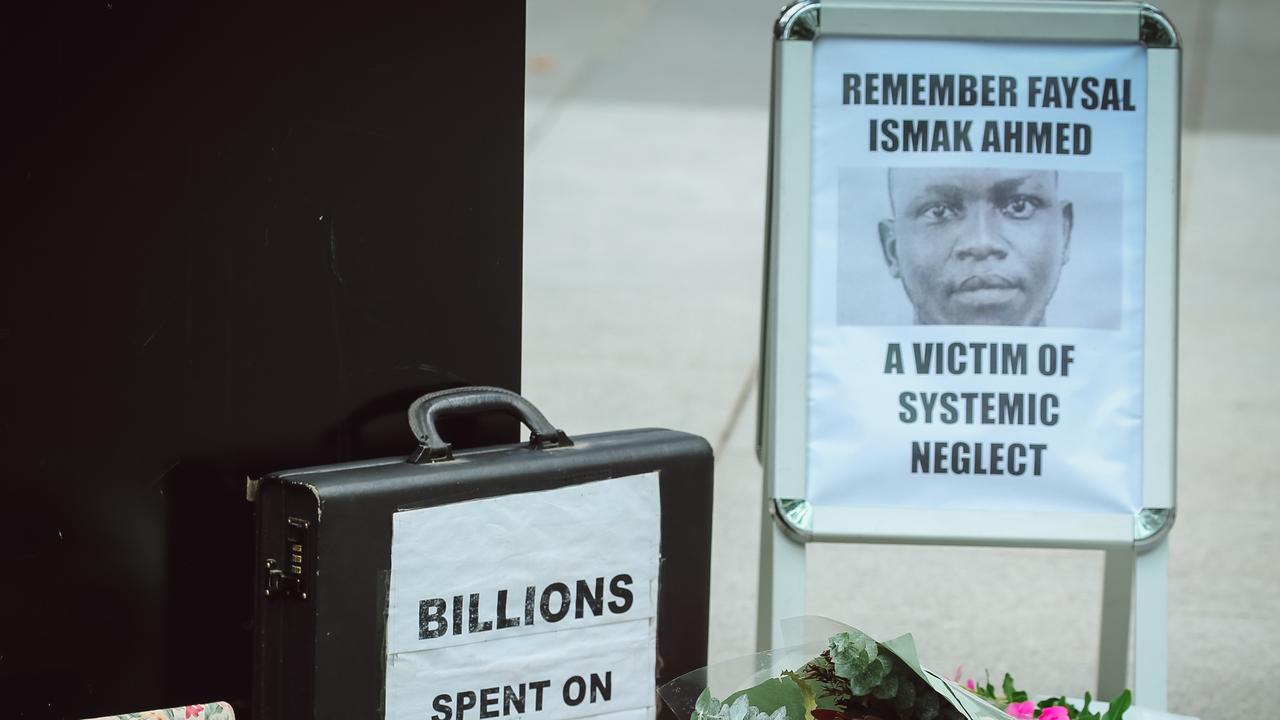A refugee who died from a fatal fall while in offshore detention on Manus Island was seen “clutching his chest” moments before his death, an inquest has been told.
CCTV captured the final moments of Sudanese man Faysal Ishak Ahmed moments before he required critical treatment on the mainland, with doctors telling a coroner nothing could have been done to avoid the fall.
State Coroner Terry Ryan will now consider submissions from the parties after an inquest into Mr Ishak Ahmed’s death concluded on Tuesday.
A date for his findings to be handed down has not been set.
Mr Ishak Ahmed, 27, had spent three years in offshore detention on Manus Island – some 300km north of the main island of Papua New Guinea – when he suffered a critical head injury on December 22, 2016.
His medical evacuation to mainland Australia did not begin until a day later at 2.15pm.
Despite attempts by staff at the Royal Brisbane and Women’s Hospital to keep him alive, he died on Christmas Eve.
The inquest into Mr Ishak Ahmed’s death is examining the adequacy of the medical treatment while in detention.
It will also examine if there was any avoidable delay in his medical evacuation and whether this may have contributed to his death.
On Tuesday, the inquest was told Mr Ishak Ahmed was seen on CCTV clutching his chest moments before suffering the fatal fall.
Doctors had already given evidence the refugee had presented multiple times – up to eight times in December 2016 alone – with varying symptoms.
Dr Steven Stylian said it was likely Mr Ishak Ahmed suffered a cardiac arrhythmia at the time, along with complications from sickle cell trait (SCT).
“There was no other explanation apart from that,” he said.
The court was told Mr Ishak Ahmed had presented before with symptoms of jaundice, likely due to haemolytic anaemia.
Asked if formal diagnosis of all these conditions while on the island would have “alleviated” Mr Ishak Ahmed’s symptoms, Dr Stylian said “not much could have been done”.
“He described a wide array of symptoms, some of them very difficult to explain,” he said.
“Even if you knew someone had SCT, I would struggle to explain these symptoms.”
Dr Stylian said the SCT diagnosis was accurate due to Mr Ishak Ahmed’s blood being analysed on mainland Australia.
Staff on the island excluded many possible conditions, but Dr Stylian said SCT was not something he expected the practitioners to consider.
The court was told there was a very low risk of sudden death in people who had SCT.
“There is nothing that could have prevented the fall,” Dr Stylian said.
On Monday, members of the Brisbane Refugee Action Collective held a vigil outside the court for Mr Ishak Ahmed and others who had died in immigration detention.
The refugee’s death provoked outcry, as refugee activists called for change to the country’s contentious detention regime.
Farhad Bandesh, an activist and artist who was detained on Manus Island, said he knew the Sudanese refugee and called him a “gentle young man” who might still have been alive today had he received the right care.
“The camps on Manus and Nauru were designed to dehumanise us and to strip our lives of all hope and meaning,” he said.
“Every single person detained on Manus and Nauru is a victim of these atrocities and deserves justice, as Faysal does.”
Human Rights Law Centre senior lawyer Josephine Langbien said offshore detention was designed to punish people seeking safety in Australia.
“Faysal’s family deserve to know the truth about how the Australian government failed him,” she said in a statement.
“The thousands of people like Faysal who were detained offshore deserve justice. This includes the 1100 people who were evacuated to Australia yet remain in limbo here as well as the approximately 100 people currently in Nauru and Papua New Guinea.
“Offshore processing provides a blueprint for dehumanisation that Australia has exported throughout the world – it must be shut down and never reopened.”
